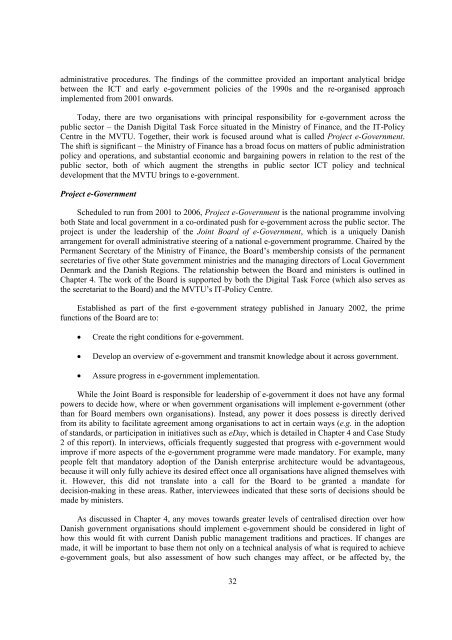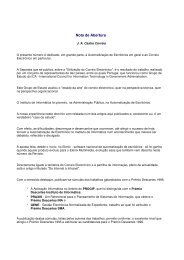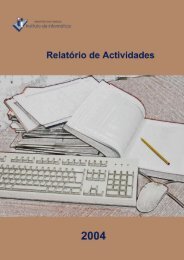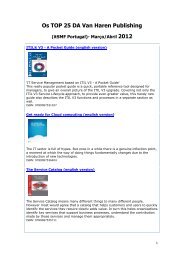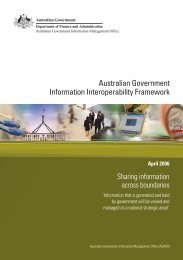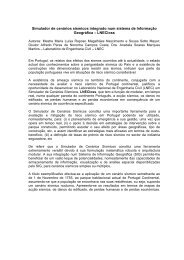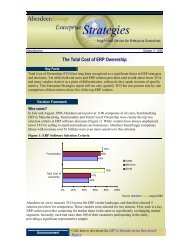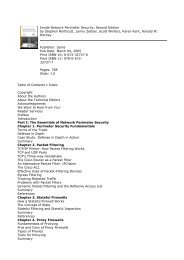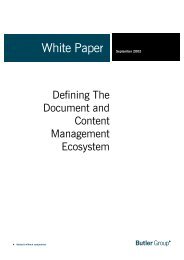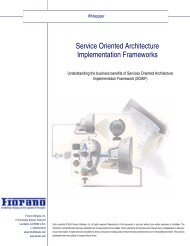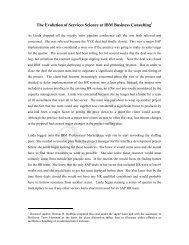OECD Peer Review of E-Government in Denmark - ePractice.eu
OECD Peer Review of E-Government in Denmark - ePractice.eu
OECD Peer Review of E-Government in Denmark - ePractice.eu
You also want an ePaper? Increase the reach of your titles
YUMPU automatically turns print PDFs into web optimized ePapers that Google loves.
adm<strong>in</strong>istrative procedures. The f<strong>in</strong>d<strong>in</strong>gs <strong>of</strong> the committee provided an important analytical bridge<br />
between the ICT and early e-government policies <strong>of</strong> the 1990s and the re-organised approach<br />
implemented from 2001 onwards.<br />
Today, there are two organisations with pr<strong>in</strong>cipal responsibility for e-government across the<br />
public sector – the Danish Digital Task Force situated <strong>in</strong> the M<strong>in</strong>istry <strong>of</strong> F<strong>in</strong>ance, and the IT-Policy<br />
Centre <strong>in</strong> the MVTU. Together, their work is focused around what is called Project e-<strong>Government</strong>.<br />
The shift is significant – the M<strong>in</strong>istry <strong>of</strong> F<strong>in</strong>ance has a broad focus on matters <strong>of</strong> public adm<strong>in</strong>istration<br />
policy and operations, and substantial economic and barga<strong>in</strong><strong>in</strong>g powers <strong>in</strong> relation to the rest <strong>of</strong> the<br />
public sector, both <strong>of</strong> which augment the strengths <strong>in</strong> public sector ICT policy and technical<br />
development that the MVTU br<strong>in</strong>gs to e-government.<br />
Project e-<strong>Government</strong><br />
Scheduled to run from 2001 to 2006, Project e-<strong>Government</strong> is the national programme <strong>in</strong>volv<strong>in</strong>g<br />
both State and local government <strong>in</strong> a co-ord<strong>in</strong>ated push for e-government across the public sector. The<br />
project is under the leadership <strong>of</strong> the Jo<strong>in</strong>t Board <strong>of</strong> e-<strong>Government</strong>, which is a uniquely Danish<br />
arrangement for overall adm<strong>in</strong>istrative steer<strong>in</strong>g <strong>of</strong> a national e-government programme. Chaired by the<br />
Permanent Secretary <strong>of</strong> the M<strong>in</strong>istry <strong>of</strong> F<strong>in</strong>ance, the Board’s membership consists <strong>of</strong> the permanent<br />
secretaries <strong>of</strong> five other State government m<strong>in</strong>istries and the manag<strong>in</strong>g directors <strong>of</strong> Local <strong>Government</strong><br />
<strong>Denmark</strong> and the Danish Regions. The relationship between the Board and m<strong>in</strong>isters is outl<strong>in</strong>ed <strong>in</strong><br />
Chapter 4. The work <strong>of</strong> the Board is supported by both the Digital Task Force (which also serves as<br />
the secretariat to the Board) and the MVTU’s IT-Policy Centre.<br />
Established as part <strong>of</strong> the first e-government strategy published <strong>in</strong> January 2002, the prime<br />
functions <strong>of</strong> the Board are to:<br />
• Create the right conditions for e-government.<br />
• Develop an overview <strong>of</strong> e-government and transmit knowledge about it across government.<br />
• Assure progress <strong>in</strong> e-government implementation.<br />
While the Jo<strong>in</strong>t Board is responsible for leadership <strong>of</strong> e-government it does not have any formal<br />
powers to decide how, where or when government organisations will implement e-government (other<br />
than for Board members own organisations). Instead, any power it does possess is directly derived<br />
from its ability to facilitate agreement among organisations to act <strong>in</strong> certa<strong>in</strong> ways (e.g. <strong>in</strong> the adoption<br />
<strong>of</strong> standards, or participation <strong>in</strong> <strong>in</strong>itiatives such as eDay, which is detailed <strong>in</strong> Chapter 4 and Case Study<br />
2 <strong>of</strong> this report). In <strong>in</strong>terviews, <strong>of</strong>ficials frequently suggested that progress with e-government would<br />
improve if more aspects <strong>of</strong> the e-government programme were made mandatory. For example, many<br />
people felt that mandatory adoption <strong>of</strong> the Danish enterprise architecture would be advantageous,<br />
because it will only fully achieve its desired effect once all organisations have aligned themselves with<br />
it. However, this did not translate <strong>in</strong>to a call for the Board to be granted a mandate for<br />
decision-mak<strong>in</strong>g <strong>in</strong> these areas. Rather, <strong>in</strong>terviewees <strong>in</strong>dicated that these sorts <strong>of</strong> decisions should be<br />
made by m<strong>in</strong>isters.<br />
As discussed <strong>in</strong> Chapter 4, any moves towards greater levels <strong>of</strong> centralised direction over how<br />
Danish government organisations should implement e-government should be considered <strong>in</strong> light <strong>of</strong><br />
how this would fit with current Danish public management traditions and practices. If changes are<br />
made, it will be important to base them not only on a technical analysis <strong>of</strong> what is required to achieve<br />
e-government goals, but also assessment <strong>of</strong> how such changes may affect, or be affected by, the<br />
32


